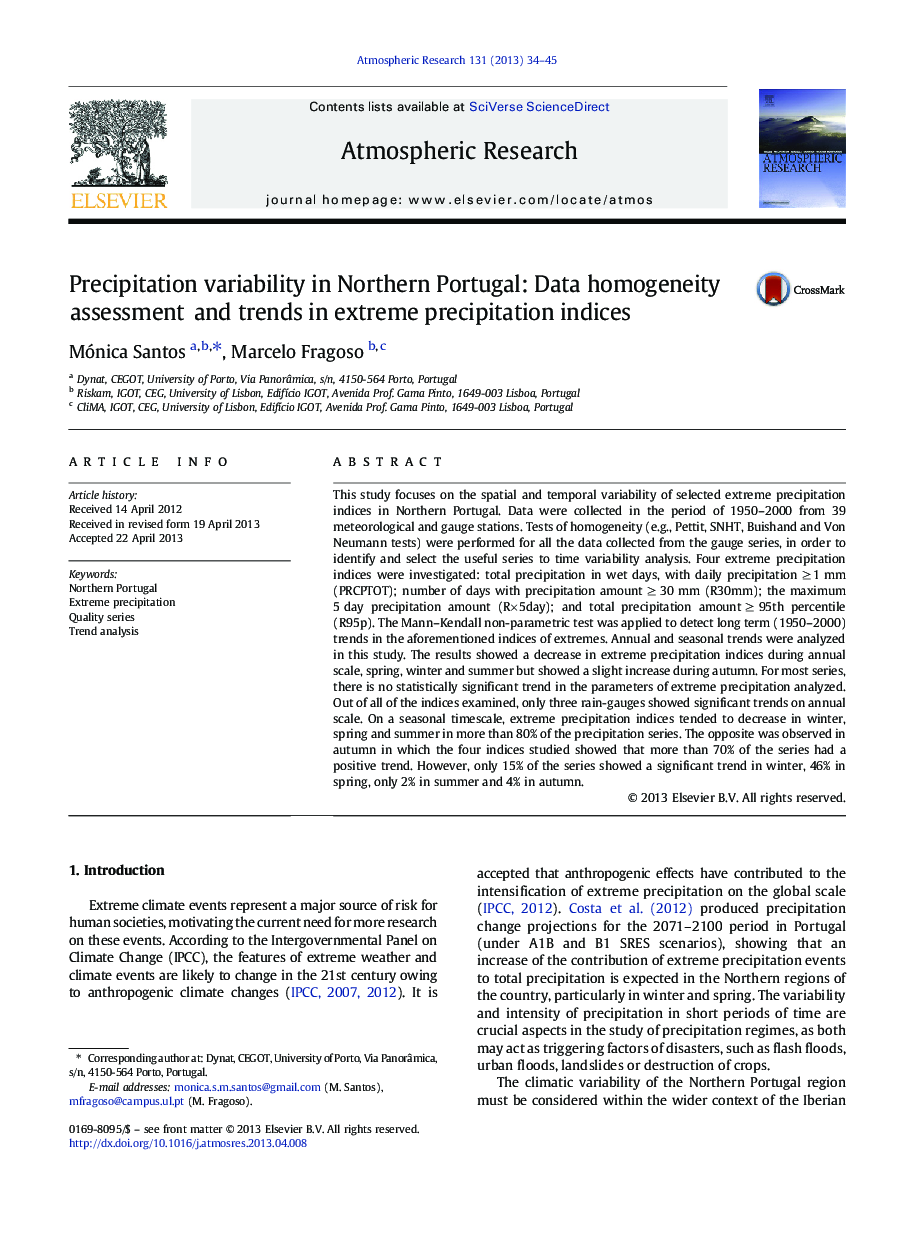| Article ID | Journal | Published Year | Pages | File Type |
|---|---|---|---|---|
| 4449970 | Atmospheric Research | 2013 | 12 Pages |
•We studied spatial and temporal variability of selected extreme precipitation indices.•Tests of homogeneity were performed for all the data collected.•Results showed a decrease in indices during annual scale, spring, winter and summer.•In autumn there is a slight increase in indices extreme precipitation.•For most series, there is no statistically significant trend.
This study focuses on the spatial and temporal variability of selected extreme precipitation indices in Northern Portugal. Data were collected in the period of 1950–2000 from 39 meteorological and gauge stations. Tests of homogeneity (e.g., Pettit, SNHT, Buishand and Von Neumann tests) were performed for all the data collected from the gauge series, in order to identify and select the useful series to time variability analysis. Four extreme precipitation indices were investigated: total precipitation in wet days, with daily precipitation ≥ 1 mm (PRCPTOT); number of days with precipitation amount ≥ 30 mm (R30mm); the maximum 5 day precipitation amount (R×5day); and total precipitation amount ≥ 95th percentile (R95p). The Mann–Kendall non-parametric test was applied to detect long term (1950–2000) trends in the aforementioned indices of extremes. Annual and seasonal trends were analyzed in this study. The results showed a decrease in extreme precipitation indices during annual scale, spring, winter and summer but showed a slight increase during autumn. For most series, there is no statistically significant trend in the parameters of extreme precipitation analyzed. Out of all of the indices examined, only three rain-gauges showed significant trends on annual scale. On a seasonal timescale, extreme precipitation indices tended to decrease in winter, spring and summer in more than 80% of the precipitation series. The opposite was observed in autumn in which the four indices studied showed that more than 70% of the series had a positive trend. However, only 15% of the series showed a significant trend in winter, 46% in spring, only 2% in summer and 4% in autumn.
